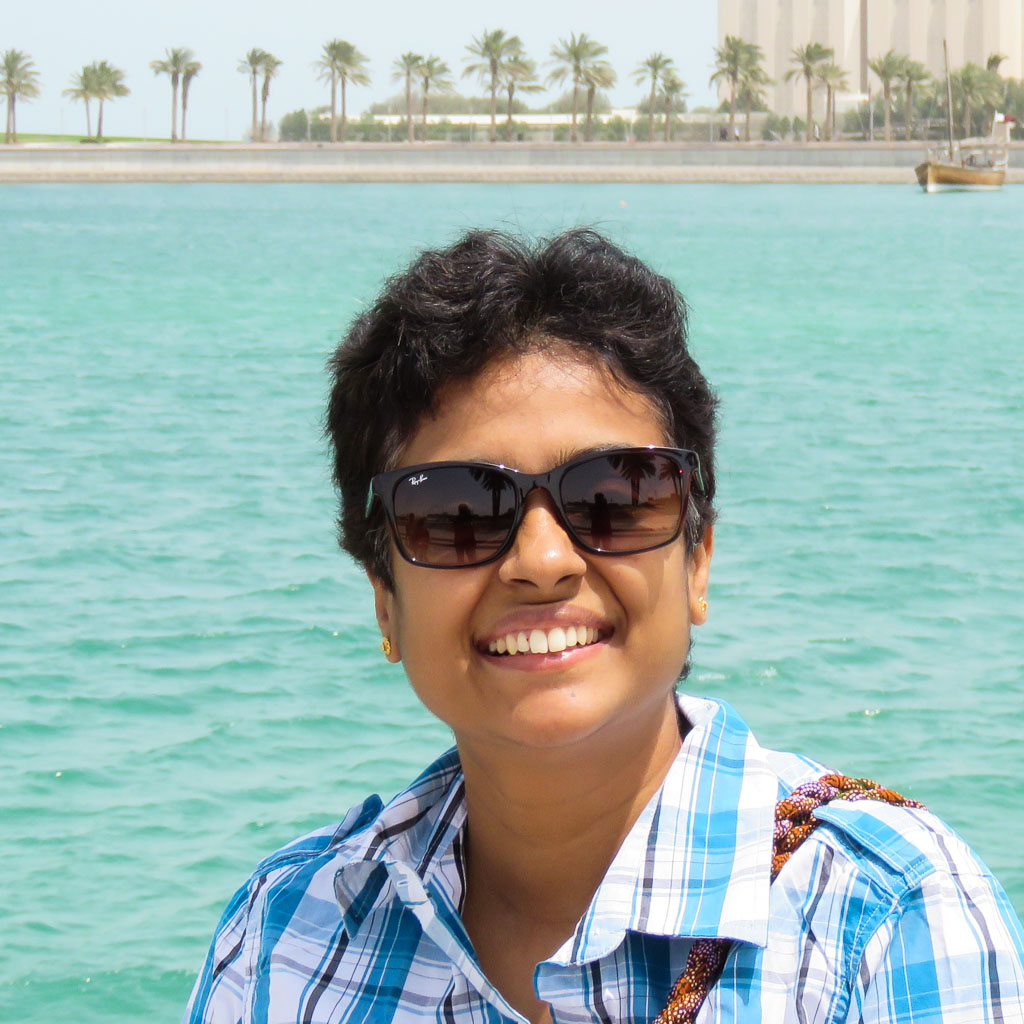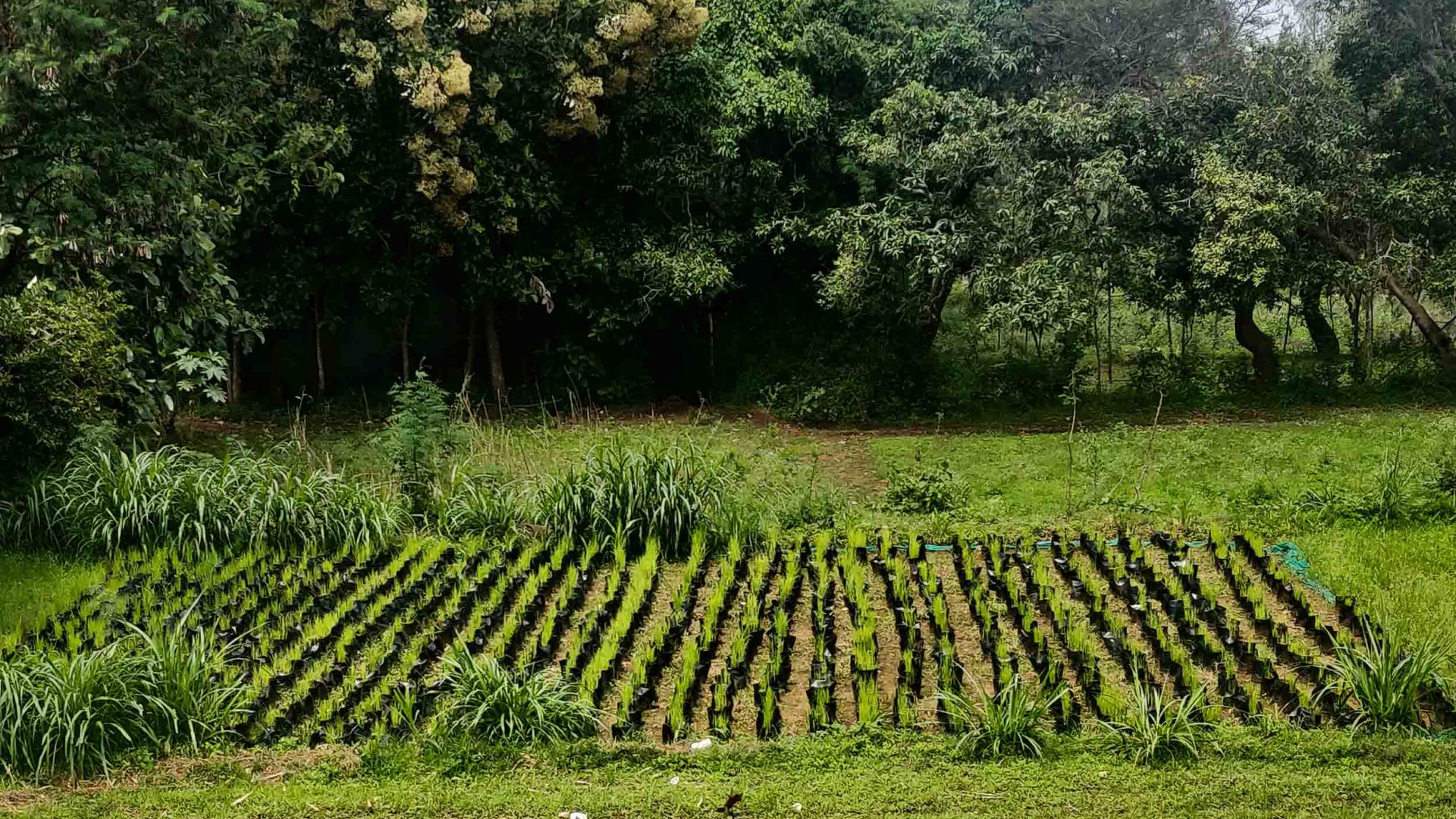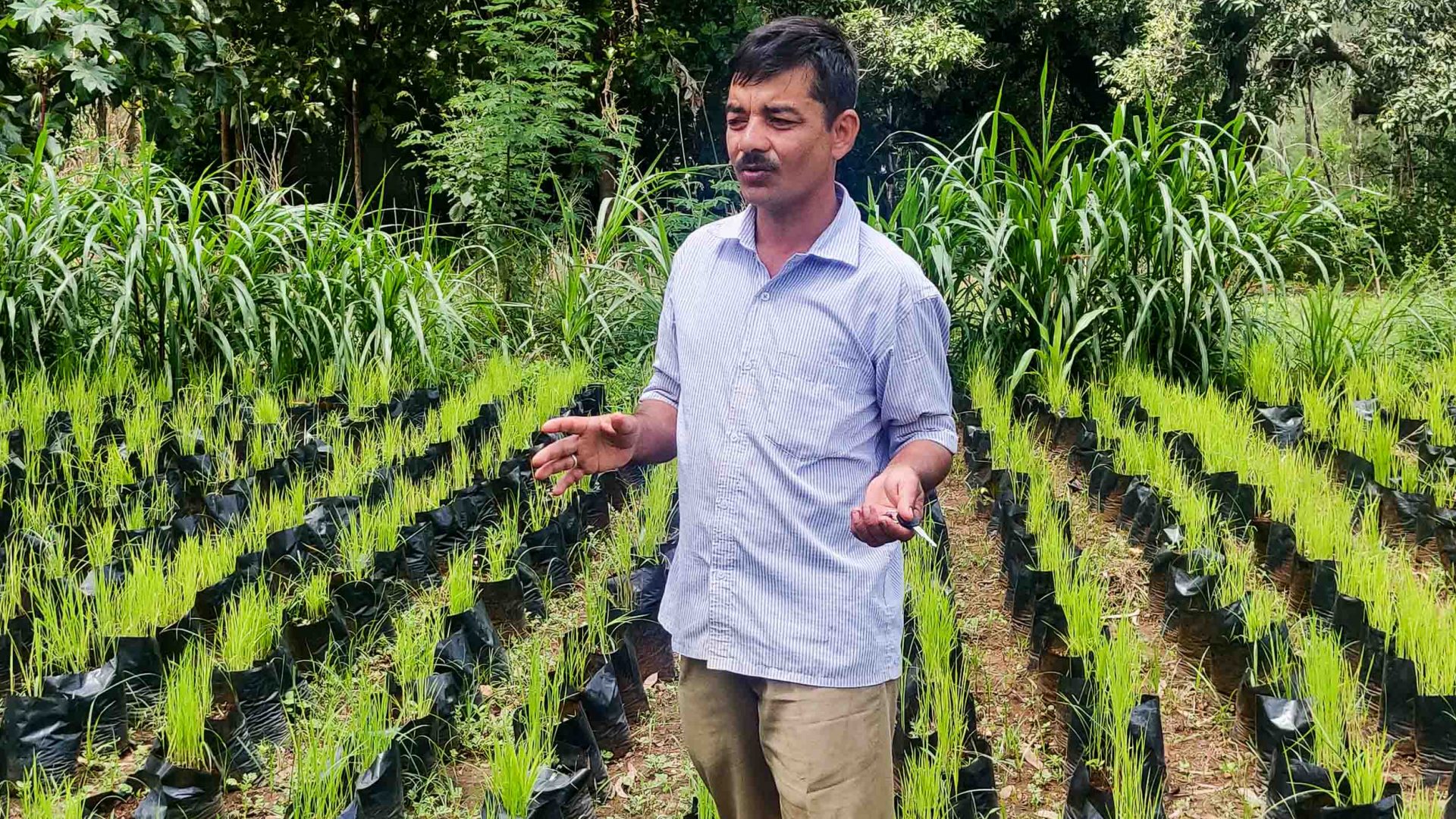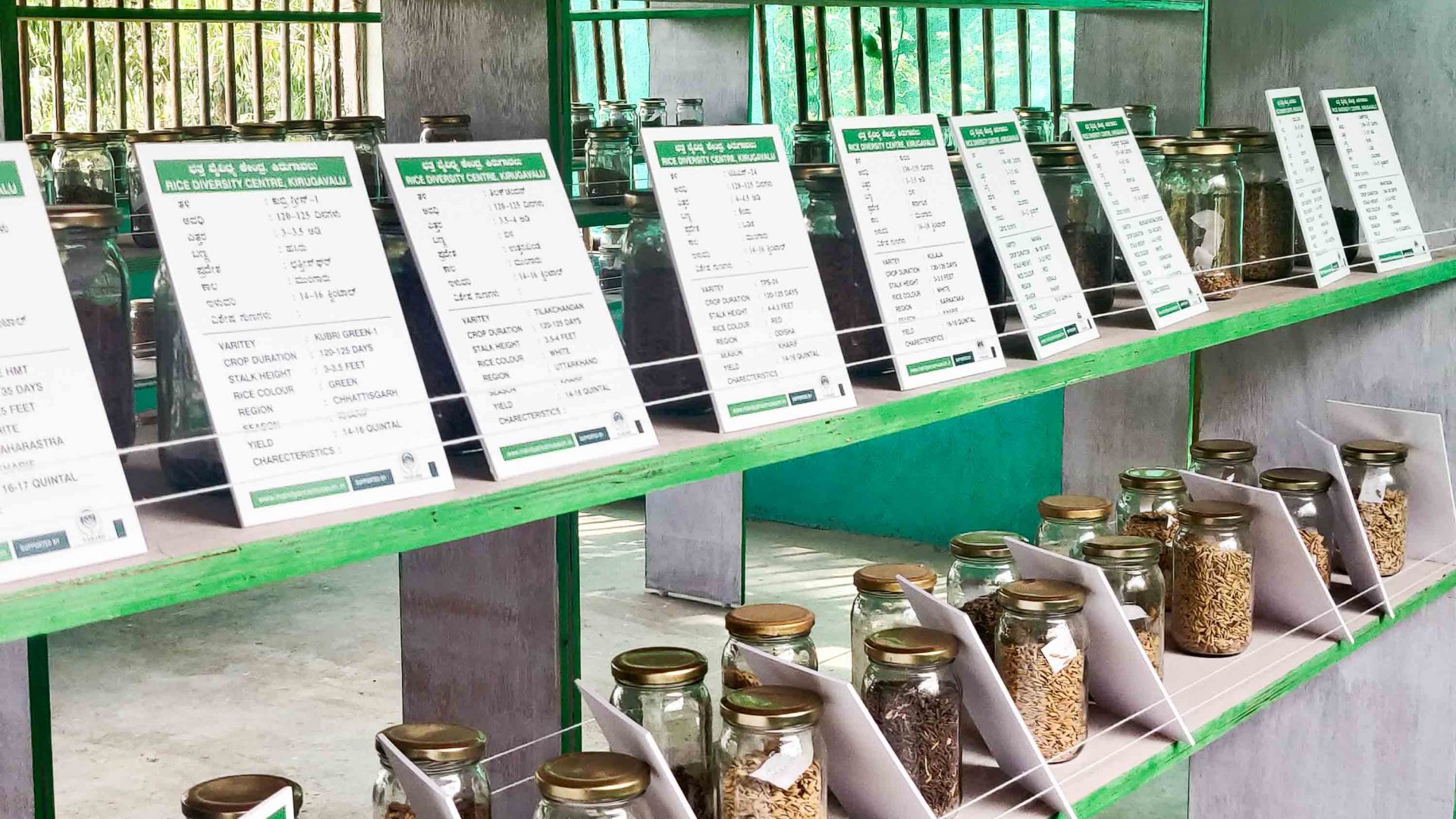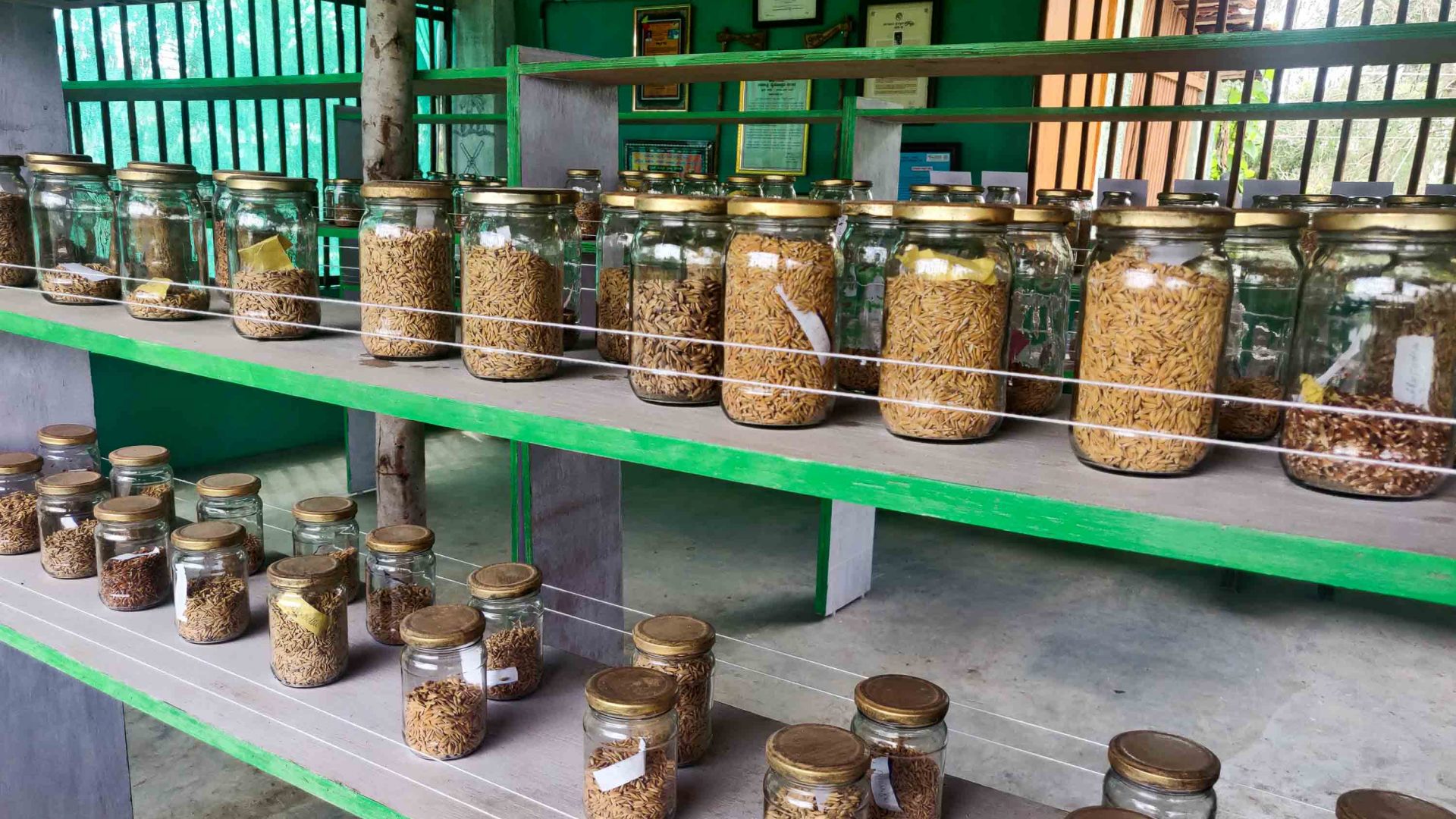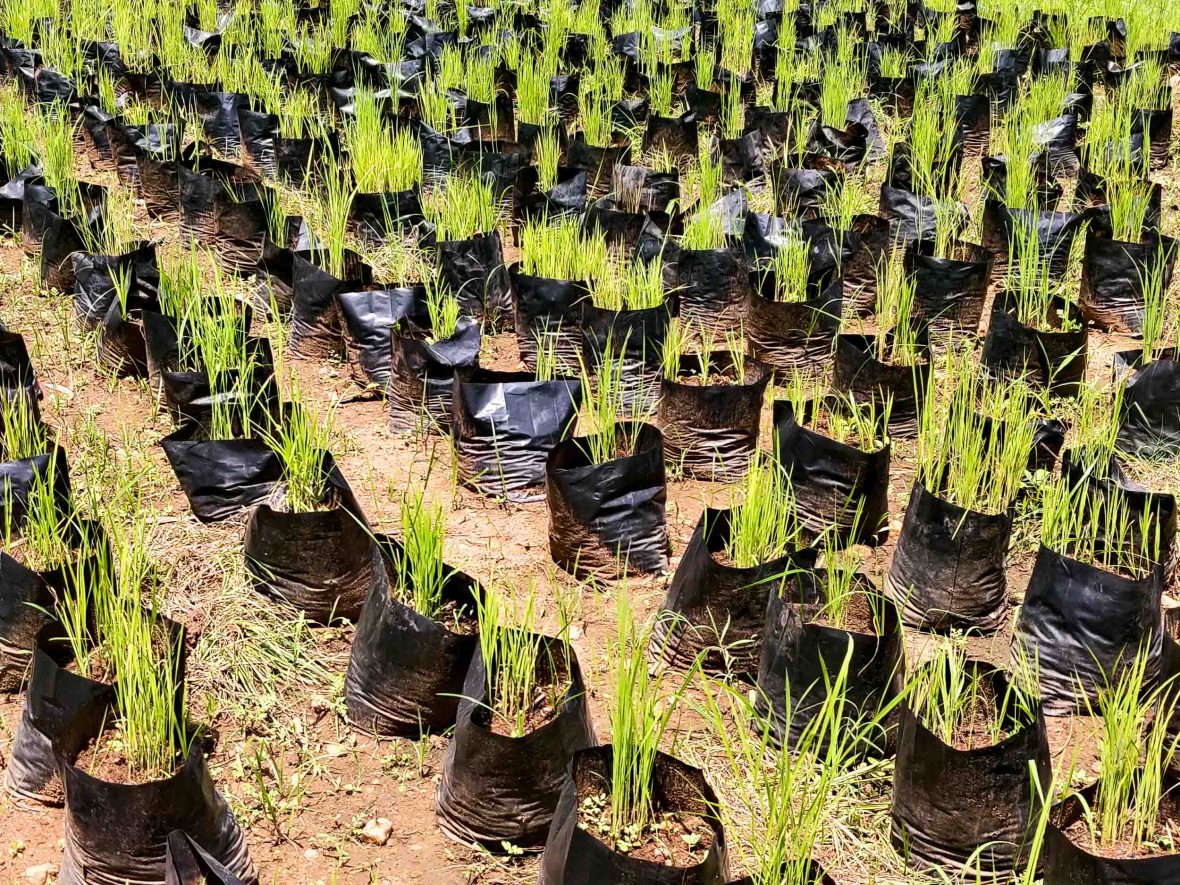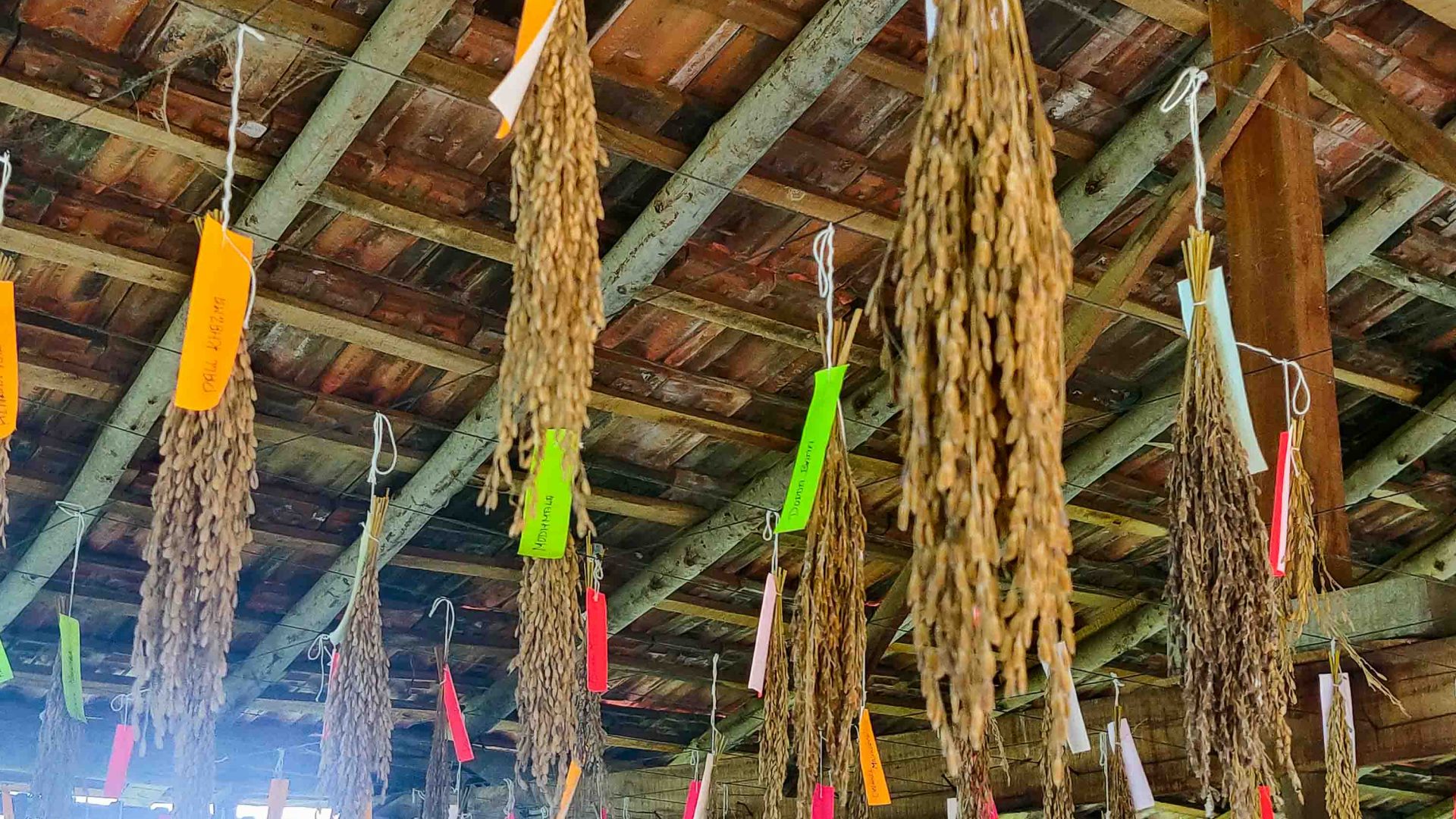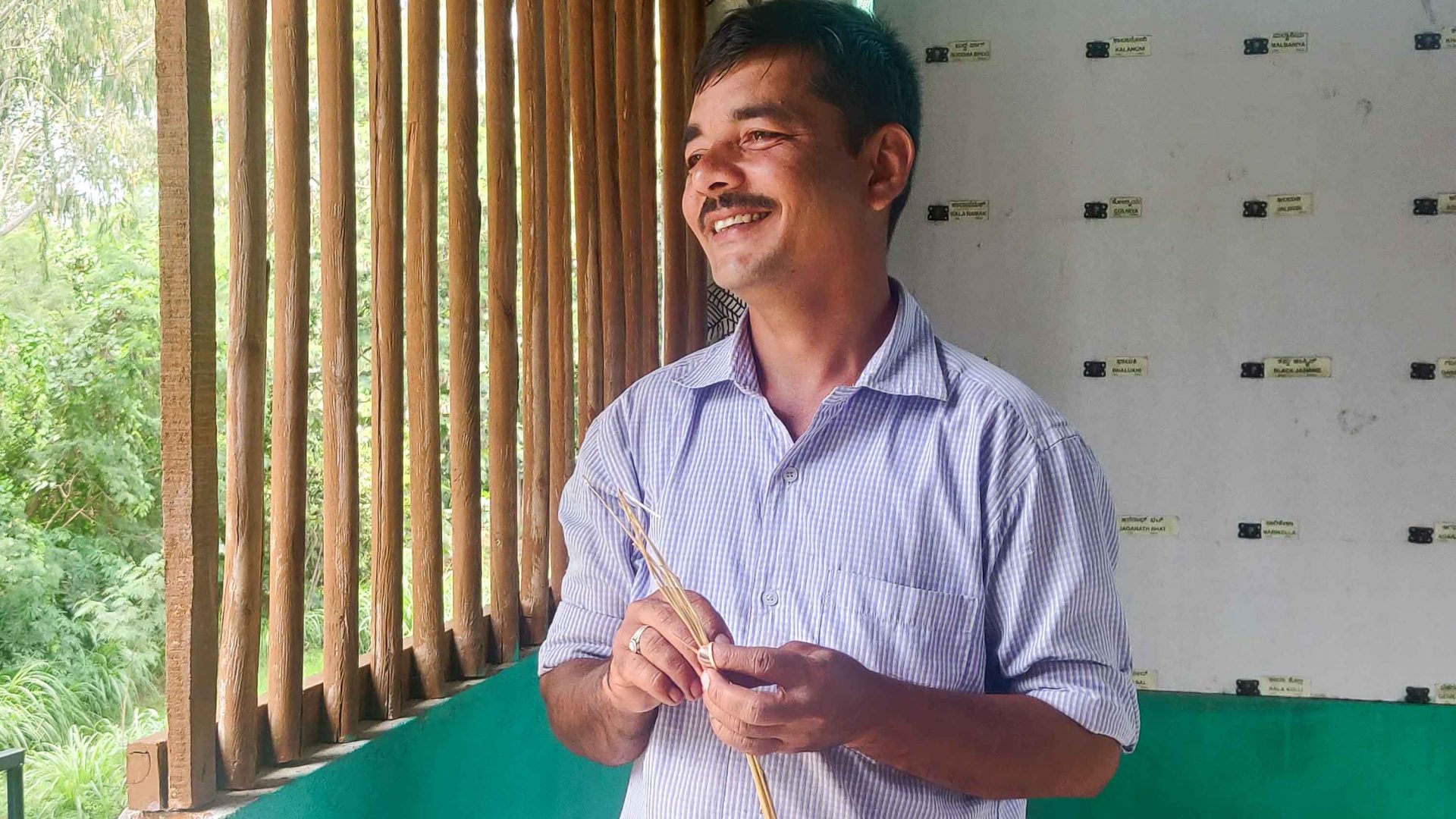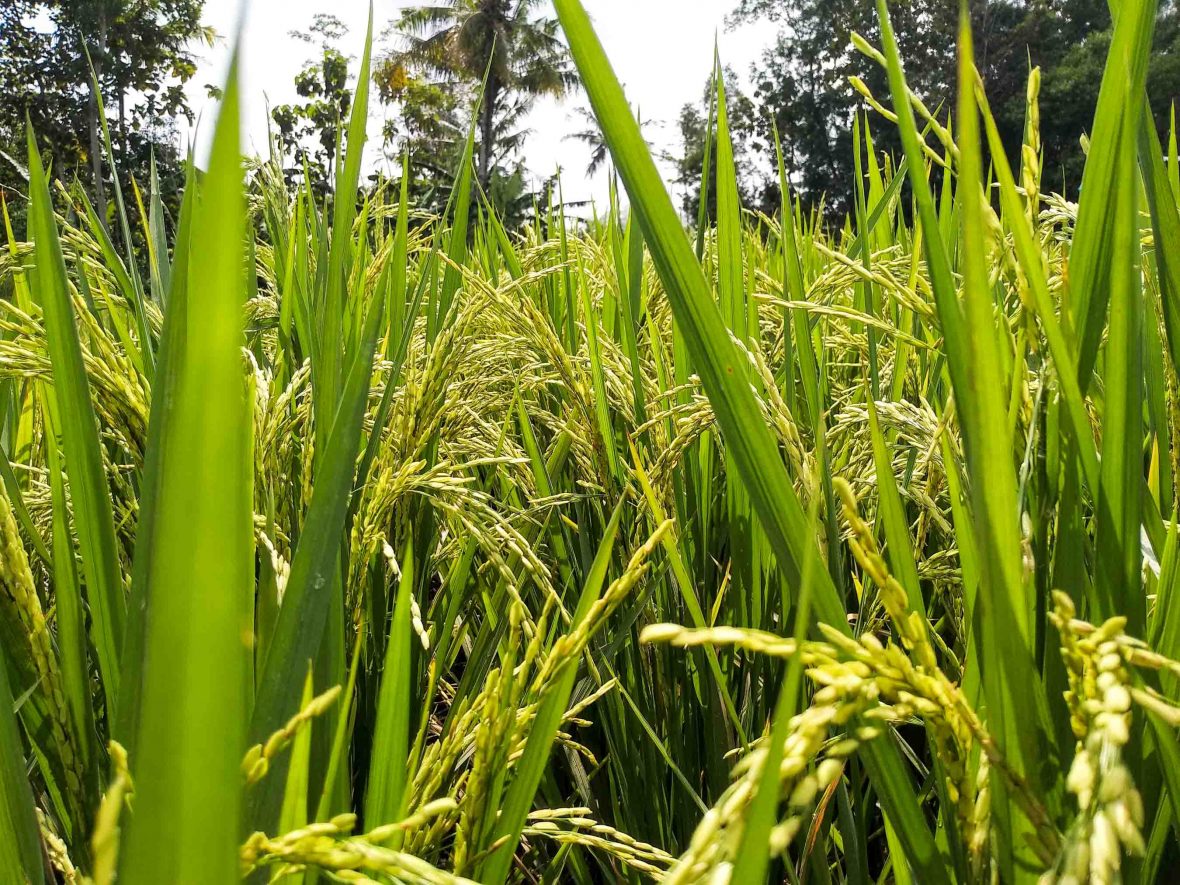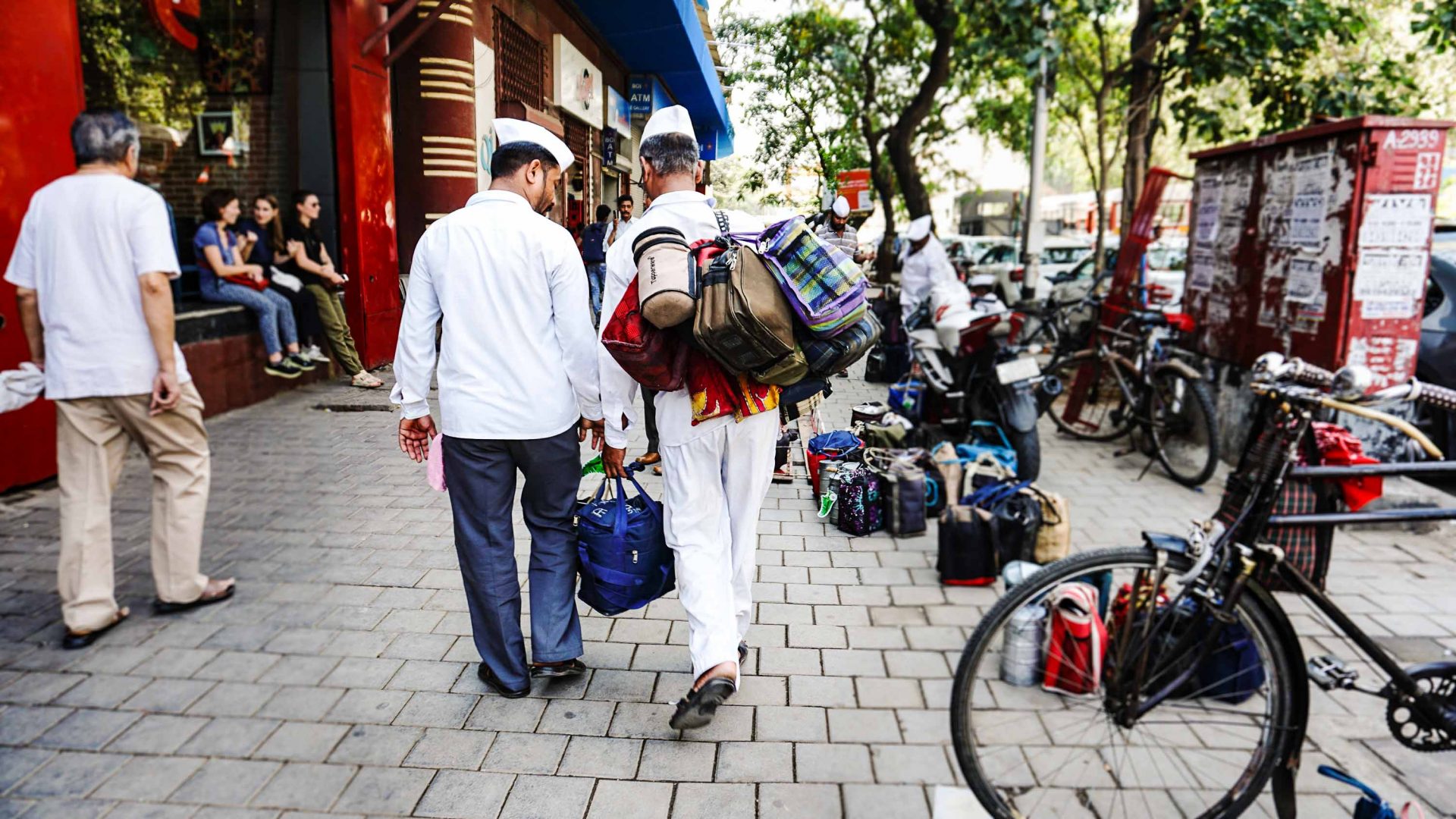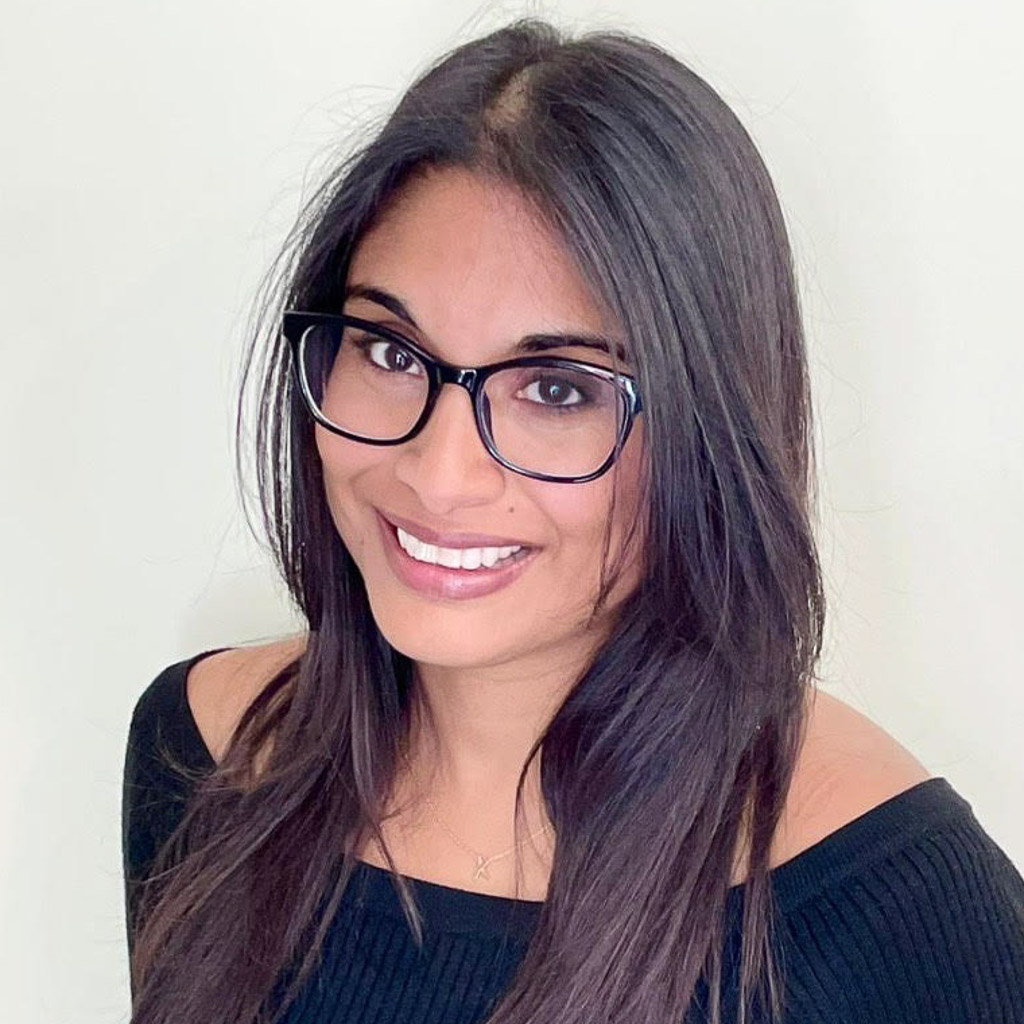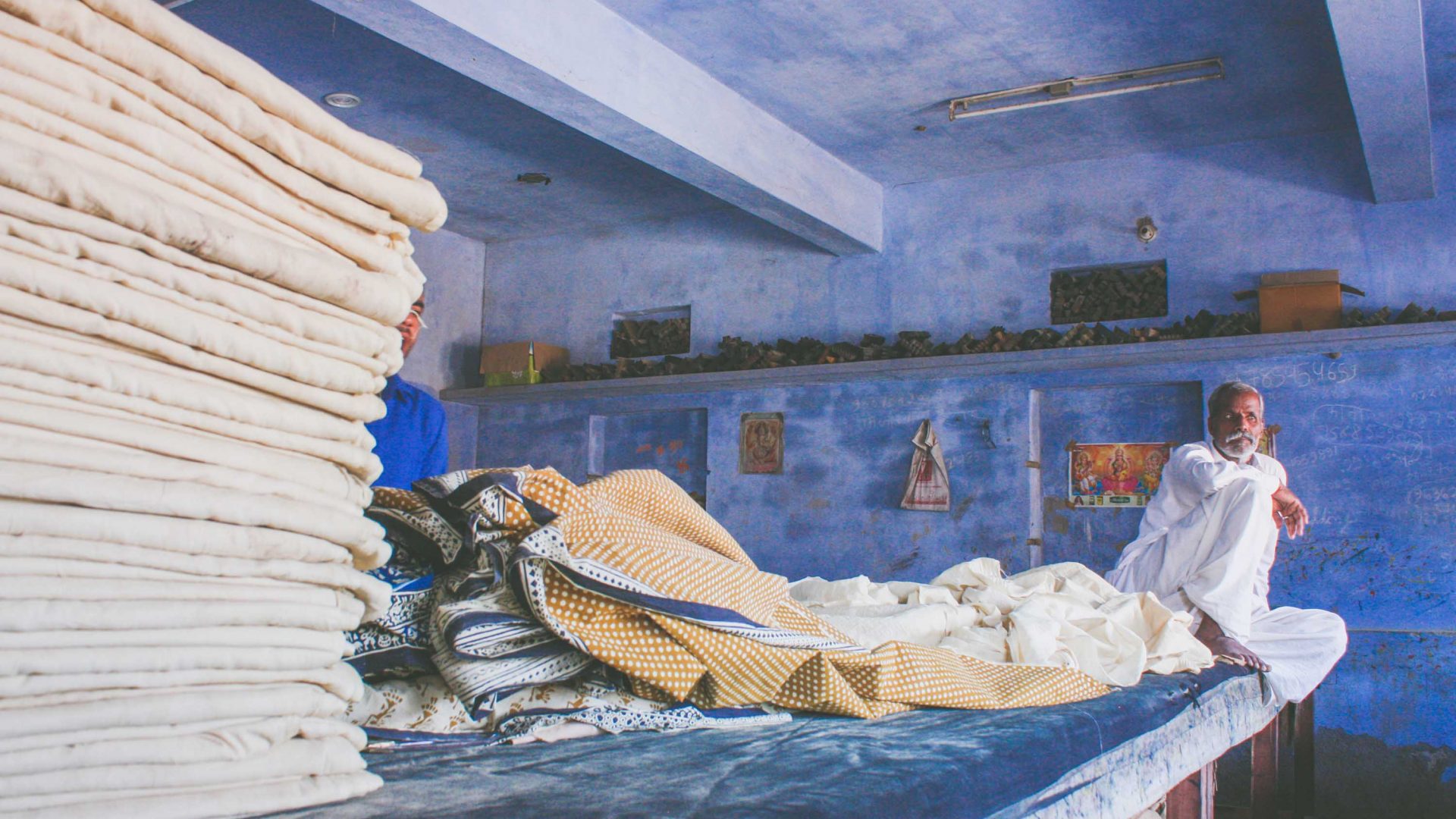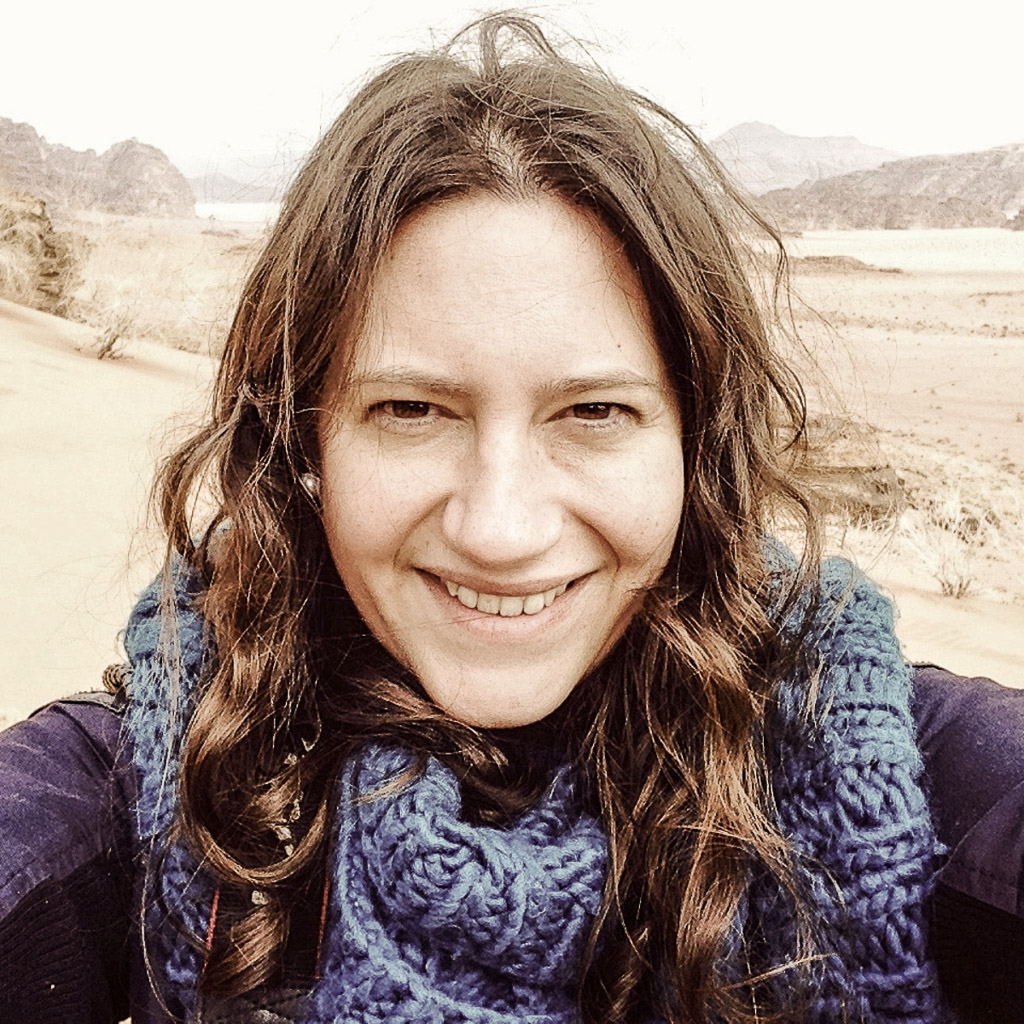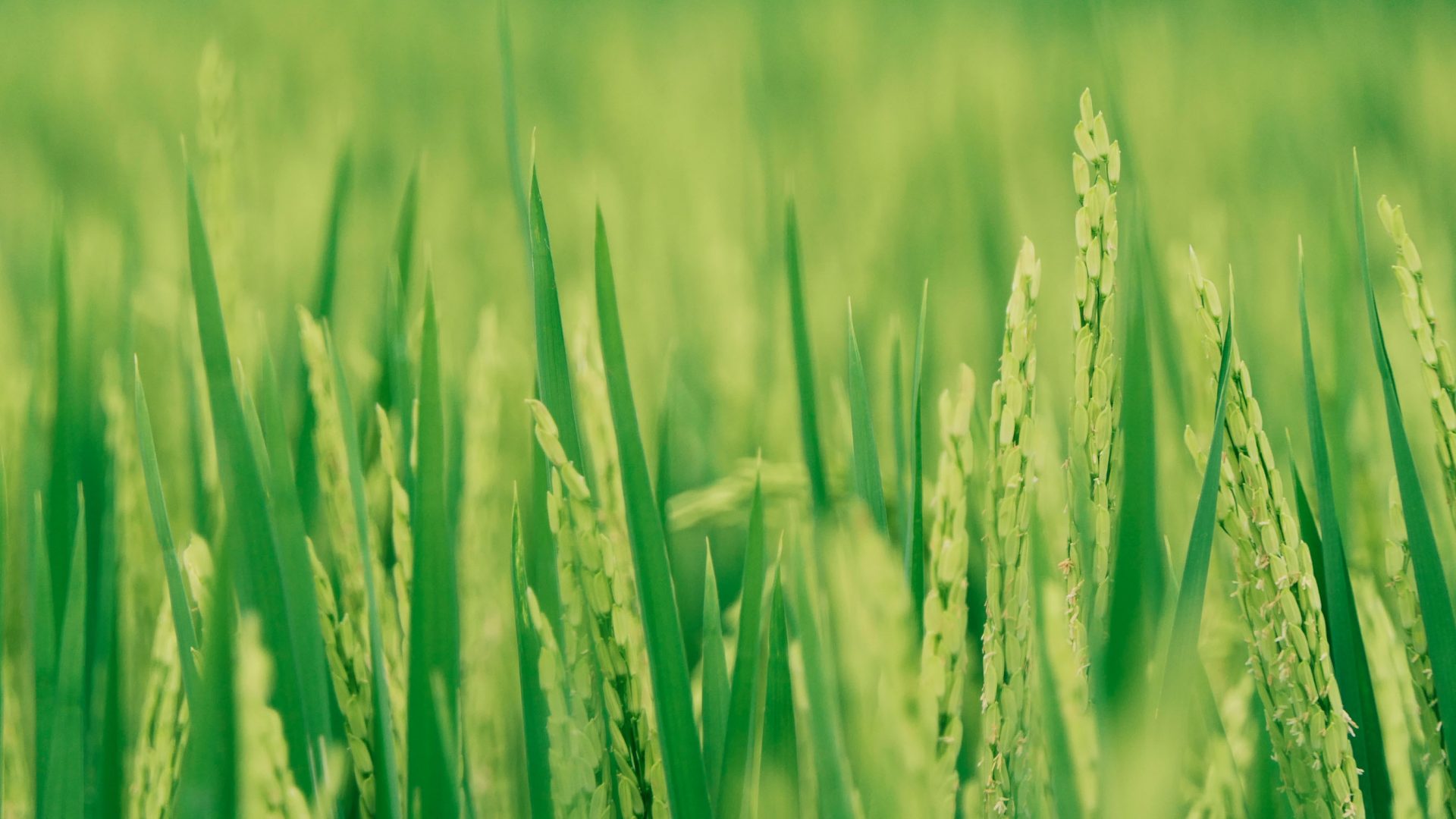
Imagine a museum with over 1,300 rice varieties, set up by a passionate farmer who wants to preserve the traditions and knowledge of his ancestors. That’s exactly what farmer and museum curator Syed Ghani Khan has created in southern India.
“’Annam Brahma’… Food is God,” says Syed Ghani Khan, as we walk up the narrow stairs of his home. “And rice, which is a gift of the earth, is not only auspicious but can also serve as medicine. Unfortunately, we seem to have forgotten this.”
We’re inside the rice museum, also known as the Rice Diversity Center on the first floor of Ghani’s house in his home village of Kirugavalu. Bamboo sticks support the brick-tiled thatched roof and different rice grains are hung from it, using twine and thread. The labels for each bottle containing a rice variety are handwritten. And instead of iron grills, there are bamboo sticks in the windows and indigenous folk art decorates the walls. “These paintings are by my daughter,” he tells me, proudly.
Ghani’s house is three hours by road from Bangalore in the southern Indian state of Karnataka in Mandya district, in a rural setting of red brick houses and green fields. Roses and native flowers fill his garden and I notice his use of coconut shells as planters, solar power for electricity, and a thriving vegetable garden.
Passionate about the diversity and benefits of indigenous varieties, Ghani started collecting and documenting varieties of native paddy (rice) two decades ago. He had always wanted to be the curator of a museum, and after gaining his degree in Archaeology and Museology in 2002, he decided to convert a part of his farm into a ‘living museum’, where he’s also cultivated over 116 mango varieties, before setting up the rice diversity center.
